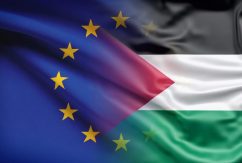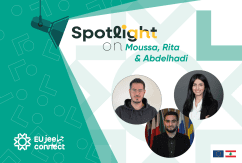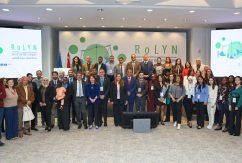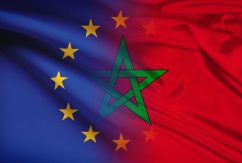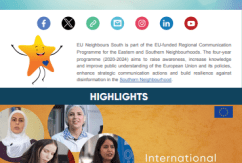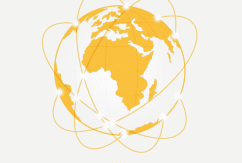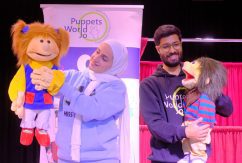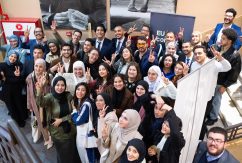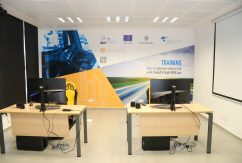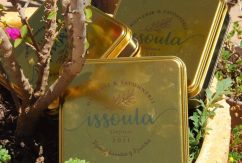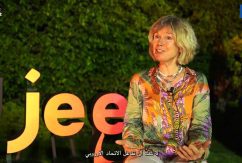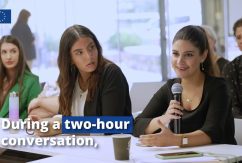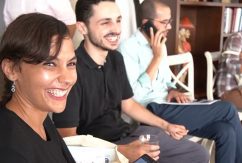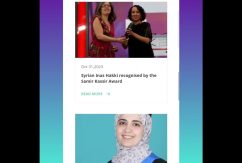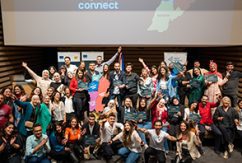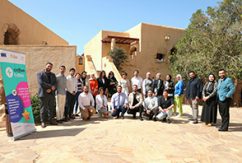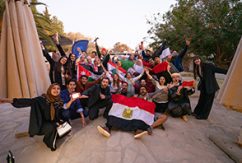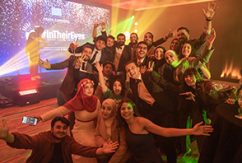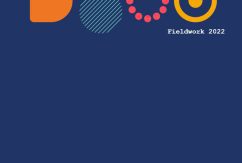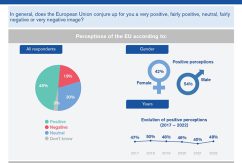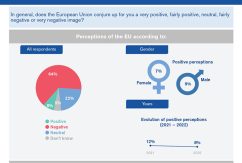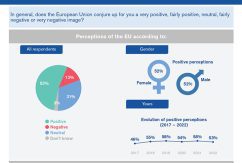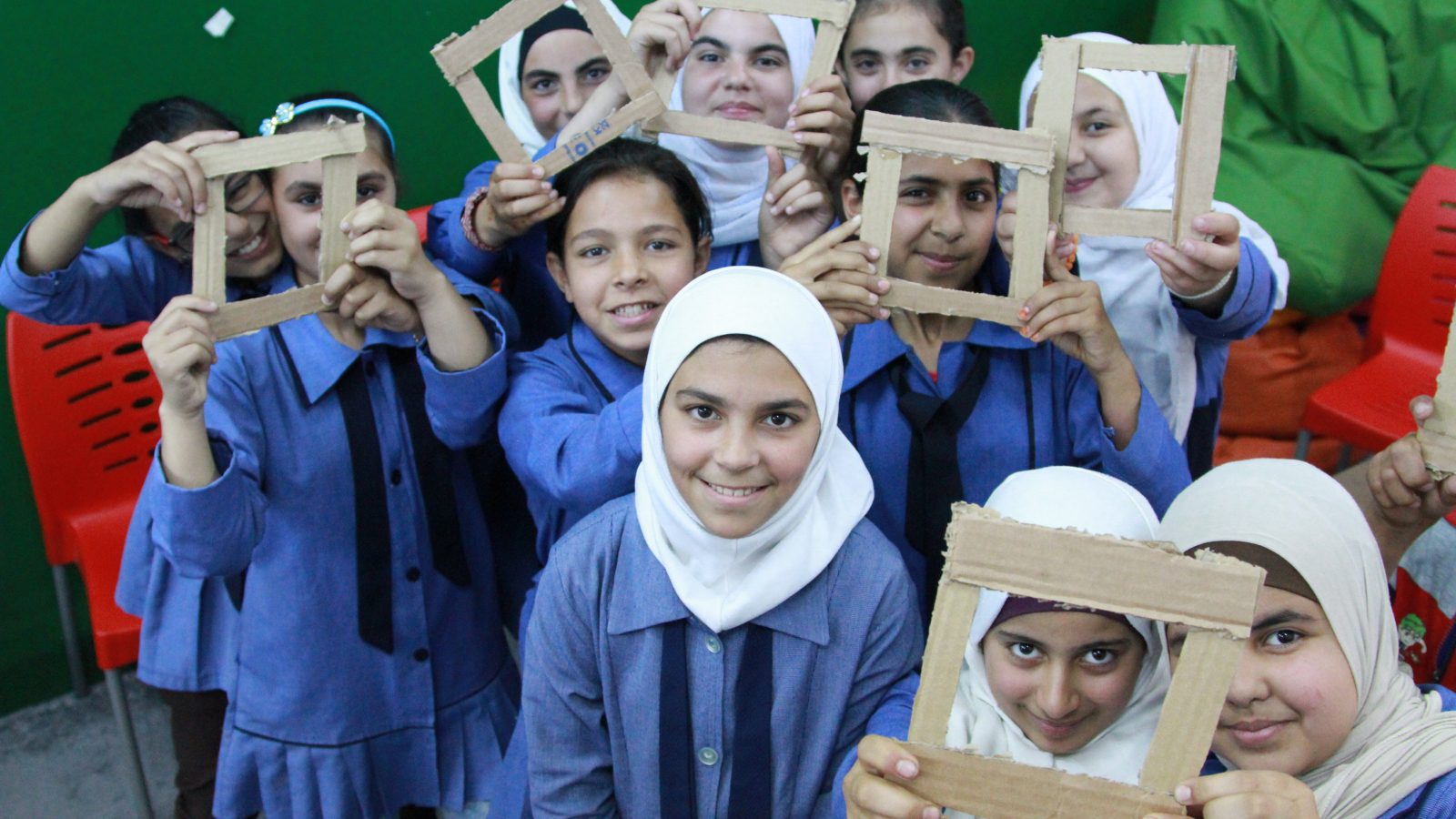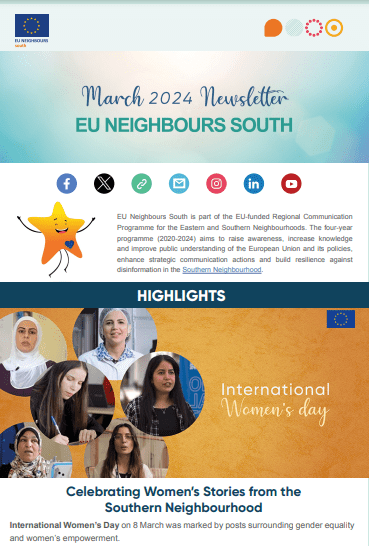Hayati: Dream maker through the lenses
The Hayati photography programme represents a novel education project that seeks to promote co-existence and self-esteem among children in Jordanian public schools currently hosting thousands of refugees. The EU-funded initiative saw 500 children capture 60,000 pictures, some of which have turned into works of art and will feature in a special book exhibited at the Jordan Museum.
“Photography taught me how to see the world through new eyes,” says 14-year-old Syrian Fatima Nezar, a student at Um Mani’a elementary school in the densely populated district of Sweileh, north Amman.
The picture has never been rosy for the frail looking girl. Having arrived in Jordan from the war-torn district of Douma in Damascus several years ago, Fatima longed for a sense of normality, life without fear, full of happy moments. The sounds of bombing, sirens and gun battles still echo in her ears.
Upon arriving in her new home in the crowded district of Sweileh, the young girl had a hostile reception from her peers – “No one wanted to be friends with me or other Syrian children,” she remembers.
But the worst is now behind her, she said, while proudly explaining her newly acquired knowledge in photography that she learnt from Hayati, which means ‘My Life’ in Arabic.
Fatima’s life took a positive turn since joining other children in the EU-funded education programme, implemented by the Ministry of Education’s offshoot organisation Madrasati, with UNICEF support and the Children’s Museum.
Fatima feels more involved, confident and at peace with her new surroundings, tentative and seemingly happy.
Fellow Syrian Reyam Al Assery joined the course out of curiosity, but ended up learning about her milieu more than she “could have ever imagined”.
“I like to take pictures of children playing in the street, daily life and mostly beautiful natural scenes,” she said.
“In the past I did not bother much about my environment, but now I pay attention to everything around me.”
EU supports education
The two Syrian girls are among the 500 students in public schools who benefited from the programme, which has been set up against the backdrop of a first successful pilot, the photo book Aya, which involved 50 children from both communities.
Since the start of the Syrian crisis in 2011, more than 160,000 Syrian children have been registered in local public schools. In a country that suffers from a lack of natural resources and struggling economy, the arrival of refugees caused serious challenges for authorities and local communities alike.
According to the EU Delegation in Amman, the EU Regional Trust Fund in Response to the Syrian Crisis, the ‘Madad’ Fund, is one of the key instruments through which the EU implements its support to Jordan. For example, the EU is providing 250 Master degree courses under the Madad Fund to Jordanians who are being selected by charity groups such as the Zakat Fund and Tkiyet Um Ali.
“The project is a bridge to help children understand each other better,” said Job Arts, Attaché and Programme Manager for Education and Youth Cooperation at the EU Delegation.
“We would like to promote this initiative to other countries in the region as well as in Europe where nowadays large numbers of Syrian refugees have settled, in particular in Germany and Sweden.”
As part of the Hayati project, children from 12 governorates across Jordan took more than 60,000 pictures that covered a wide range of topics, from daily life in school and streets to natural scenes, farmers, vendors as well as hobbies and dreams.
“We noticed that children, teachers and parents are enthusiastic about Hayati. This enthusiasm could be due to absence of extra-curricular activities, especially in the field of photography. We are now discussing with the Children’s Museum to roll out the exhibition all over Jordan,” added Arts.
Ever since the conflict broke out in Syria, the EU has been strongly committed to engage with the ‘No Lost Generation’ campaign, and has supported UNICEF and the Ministry of Education with more than €150 million.
But despite the hefty contribution by the EU to promote quality and to reduce drop out rates in schools, “slow progress has been made”, according to officials at the EU Delegation.
Abdject poverty among refugees and local communities have contributed to a high rate of drop out, particularly among the Syrian community.
Universal children
During the past decades, Jordan has witnessed waves of refugees flooding its gates, including Palestinians, Iraqis, Syrians, Yemenis, Sudanese among others, representing a huge challenge for educators as they attempt to promote tolerance and co-existence.
Saher Fayadh, the principal of Um Mania School, where the workshop was implemented, said the Hayati project had passed its first test with flying colours.
“Hayati has granted children values that allow them to co-exist, become universal children, liberate them from fear of others, cooperate and discover human rights by themselves and become productive.”
“This project allowed children to get ready for life, gave them communication skills, prepared them for life and built up their self-confidence,” said Fayadh.
Meanwhile, photography trainer Khalid Umran was amazed at the children’s abilities.
“Students in my class have a common interest in photography. This created a brotherly atmosphere between Jordanian and Syrian children.”
The result of Hayati is reflected in the confident gesture of Jenan Barakat, an 8th grader who speaks like a movie star.
An ever smiling vibrant young girl, Barakat is articulate and exhibits a high lvel of self-esteem as she explains her experience with the course.
“I carry the camera everywhere with me. I take pictures of small and big things. The feedback of my trainer was great, which made me feel proud of myself.”
She recalls that some people attempted to discourage her from pursuing photography lessons, but she “ignored them”.
Barakat wants to learn more about photography and probably turn into a professional photographer.
For now, she is enjoying the freedom photography has given her. “I started loving photography. My self-confidence has increased, I made new friends,” she said while sharing a giggle with Fatima and other children.
